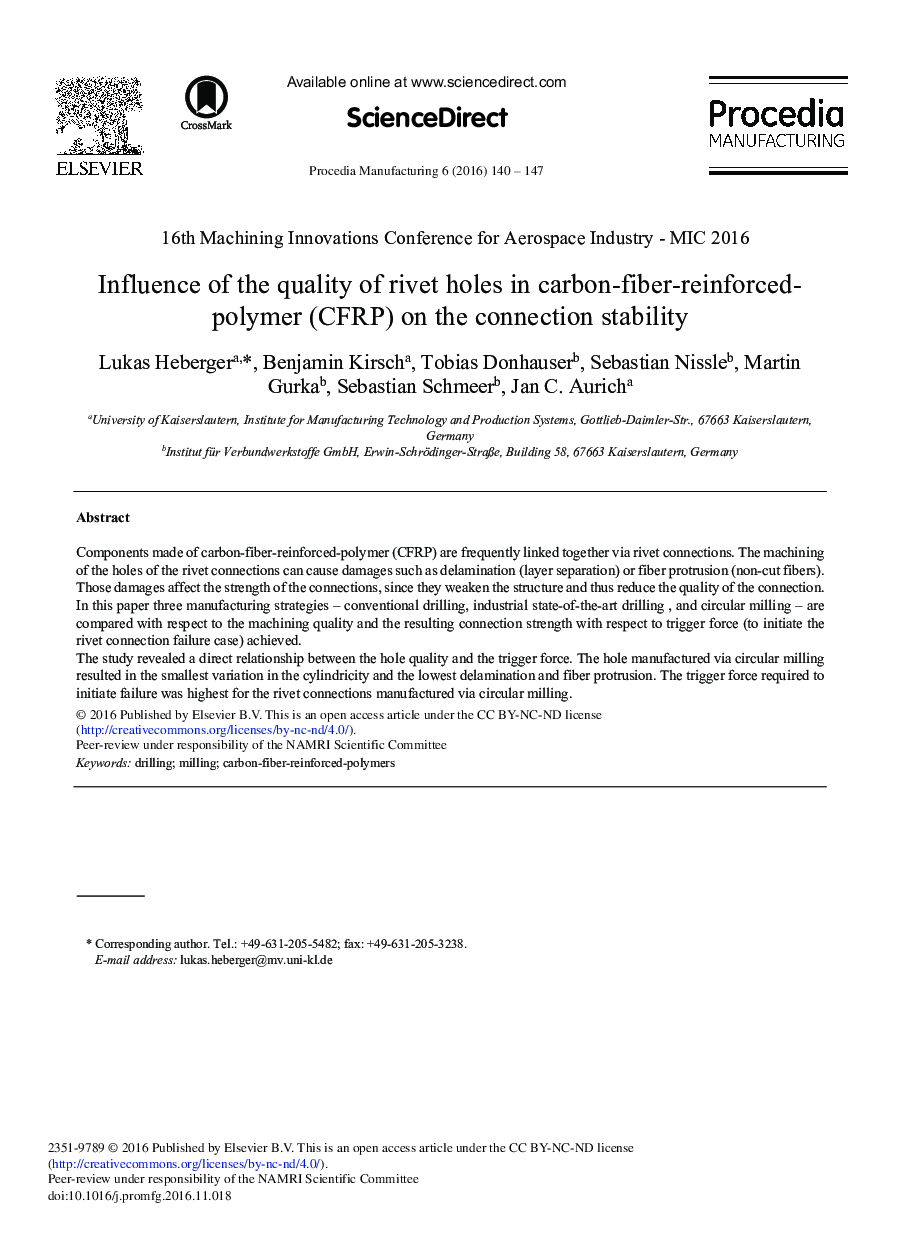| Article ID | Journal | Published Year | Pages | File Type |
|---|---|---|---|---|
| 5129120 | Procedia Manufacturing | 2016 | 8 Pages |
Components made of carbon-fiber-reinforced-polymer (CFRP) are frequently linked together via rivet connections. The machining of the holes of the rivet connections can cause damages such as delamination (layer separation) or fiber protrusion (non-cut fibers). Those damages affect the strength of the connections, since they weaken the structure and thus reduce the quality of the connection. In this paper three manufacturing strategies - conventional drilling, industrial state-of-the-art drilling, and circular milling - are compared with respect to the machining quality and the resulting connection strength with respect to trigger force (to initiate the rivet connection failure case) achieved.The study revealed a direct relationship between the hole quality and the trigger force. The hole manufactured via circular milling resulted in the smallest variation in the cylindricity and the lowest delamination and fiber protrusion. The trigger force required to initiate failure was highest for the rivet connections manufactured via circular milling.
